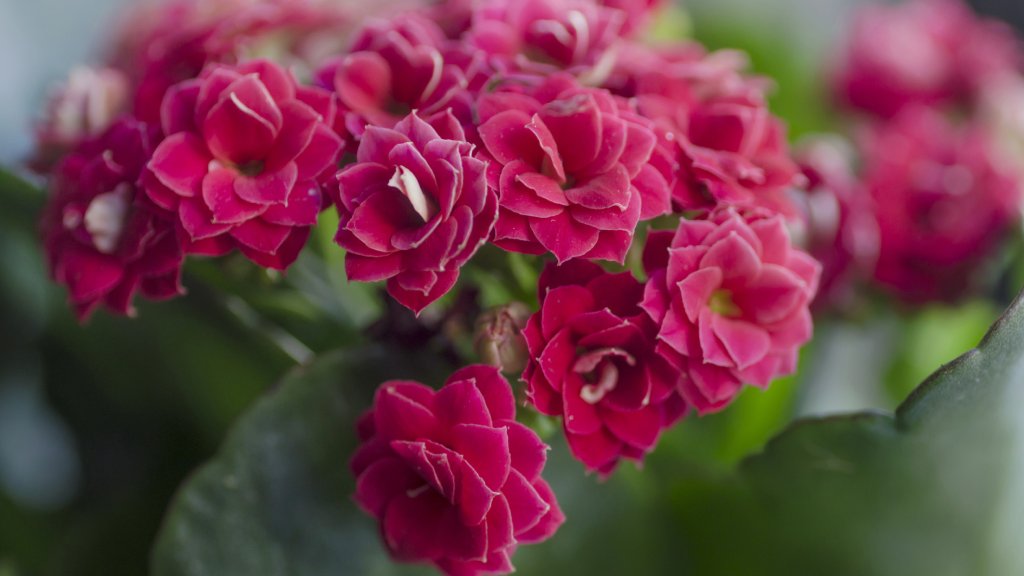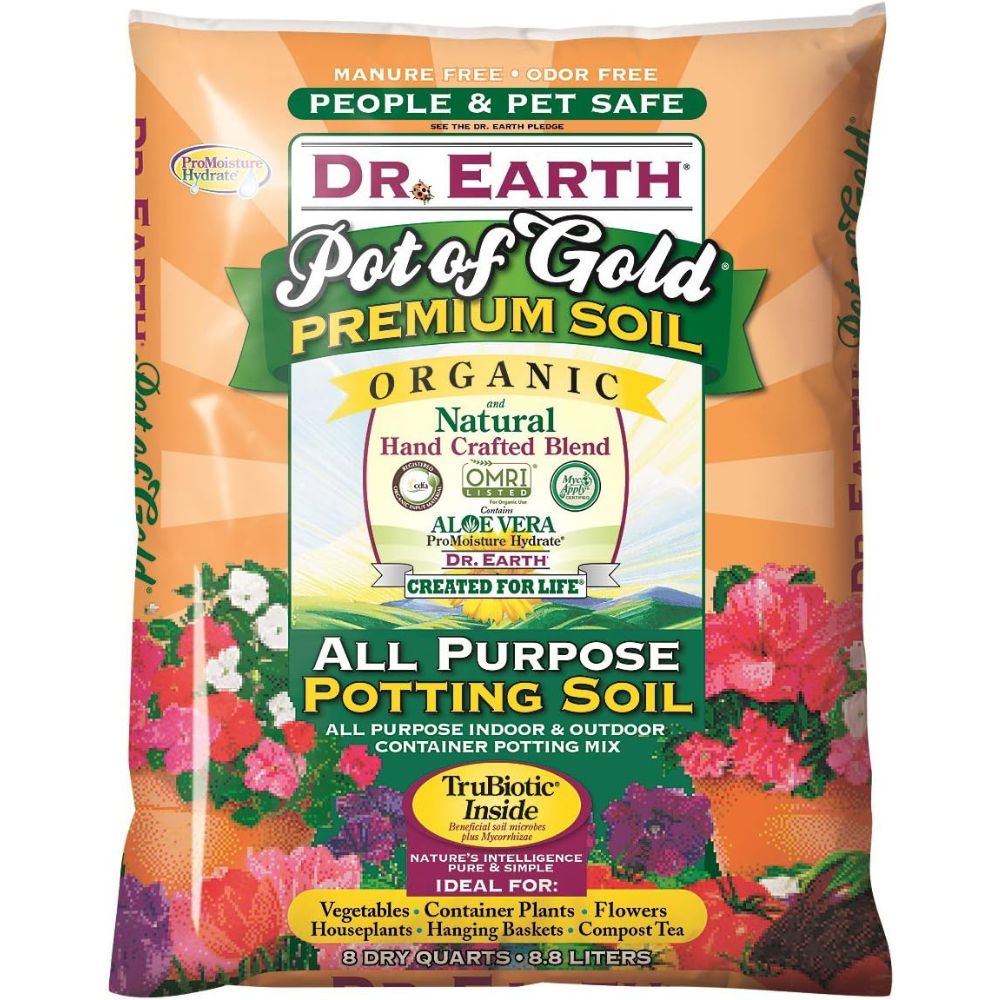Kalanchoe: Complete Growing & Plant Care Guide
When you plant kalanchoe succulents in the proper conditions, the stunning flowers will brighten your home or garden.


Quick Kalanchoe Facts:
- Botanical name- Kalanchoe blossfeldiana
- Height- 6-12 inches (15-30 cm)
- Spread- 6-36 inches (15-91 cm)
- Sun exposure- Full
- Soil requirements- Well draining
- Hardiness zones- USDA 8-11
- When to plant- Spring
Kalanchoes are one of those commonly found gift plants in floral departments of grocery stores, nursery center shelves, and even on Amazon. The beautiful long-lasting rose-shaped blooms come in a range of colors. The kalanchoe plant is a succulent and is easy to care for and grow.
Lucky owners of a kalanchoe plant can look forward to flowers on the plant for at least a month or more. The gently scalloped leaves and appealing bushy form combine to make an eye-catching plant. Caring for a kalanchoe isn’t difficult, but getting it to rebloom can be tricky.
Kalanchoe Plant Care
Kalanchoe plants are native to Madagascar. They are members of the stonecrop family, a group of half-hardy succulents. These perennials, however, are only hardy to USDA zones 8-11. In most areas, this means they can go outdoors in summer, but must be brought in for winter.
Light
Kalanchoe plants need plenty of sunlight during the day. In their native range, they thrive in a sunny climate with at least 8 hours per day of light. In dimmer homes, an artificial plant light can provide supplemental light. Kalanchoes growing in less sunlight will get leggy as the stems stretch to get more sun, but strong, southern light can burn the tips of the leaves. Turn kalanchoe plants daily to keep excess growth from occurring that can make the plant unbalanced.
Water
The key to watering kalanchoe plants is good drainage to avoid root rot. Like most succulents, kalanchoe plants do not like wet feet. They thrive when there is a dry period before watering. Allow the soil to dry almost completely before watering thoroughly and deeply. Do not set containers on a saucer where water can collect.
Temperature & Humidity
This plant is from a warm region of the world and has no cold hardiness. In the home, it prefers temperatures of at least 60 degrees Fahrenheit (16 C). This cooler temperature will keep the blooms on the plant longer. After the plant has lost its flowers it may be kept in temperatures up to 80 degrees Fahrenheit (27 C). The succulent is a short day plant that needs cooler temperatures and shorter periods of light in the fall to encourage reblooming.
Soil
To flourish, kalanchoe requires a well-draining soil medium. Potting soil is sufficient with proper watering techniques. A homemade medium of 60 percent peat and 40 percent perlite is a perfect mixture. A mix of 50 percent potting soil and 50 percent cactus mix will also work. Outdoor plants in warmer regions can be installed in the ground in well-draining loam or sandy soil.
Sign up for the Gardening Know How newsletter today and receive a free copy of our e-book "How to Grow Delicious Tomatoes".
Fertilizer
Caring for kalanchoe indoors includes a program of feeding. During the growing season when the plant is actively producing new shoots and leaves, fertilize it with a balanced houseplant food once per month. During fall and winter months, the plant will sort of hibernate and suspend new growth. Stop fertilizing during this period and resume in spring.
Problems, Pests & Diseases
Indoor kalanchoe plants rarely have any pest issues, but the most common problems stem from overwatering. Use a soil moisture meter until you get used to the plant’s needs. Water it less in winter when it is not active. Outdoor plants are prey to mealybugs, aphids, scale, and other sucking insects. Use a spray of rubbing alcohol to eradicate these pests.
How to Plant Kalanchoe
Outdoor plants are best installed in spring when the soil has warmed and there is no danger of frost. Indoor-grown kalanchoe plants will need repotting every few years. Slightly increase the size of the container as needed but don’t leave too much open soil exposed. Like any purchased plant, gently fluff the roots out into the planting container before backfilling with soil.
Pruning Kalanchoe
Kalanchoes don’t need pruning, but pinching off stems that have become leggy will enforce tighter growth. This is best done in early spring. Any dead or damaged plant material may be removed at any time.
Kalanchoe Propagation
Kalanchoe plants, as they are succulents, are easy to propagate. In spring to early summer, cut off a 2- to 3-inch (5-7.5 cm) piece from a vegetative stem. The cutting should have 2 pairs of leaves, 1 set of which is removed at the bottom.
Let the cutting callus on the counter for a few days and then insert the cut end into a peat/perlite mixture that’s been premoistened. Place the container in a plastic bag to maintain high humidity. Remove the bag once per day to let excess condensation evaporate. Expect roots in 10-14 days.
Reblooming
Although the foliage of kalanchoe plants is interesting even without blooms, the flowers make the most spectacular display. To force the plant to bloom again, you must fool it into believing it has experienced winter.
During October and early March, the day lengths are short enough to naturally force flower buds. In other periods, you will have to put the plant in a closet or dim room for most of the day. Bring it out only for morning light and then put it away after a few hours.
The plant needs six weeks of 12 to 14 hours of darkness to form spectacular new flowers. The best temperatures for the formation of flowers are 40-45 F. (4-7 C.) at night and 60 F. (16 C.) during the day.
Repotting
An important part of Kalanchoe care is repotting. The plant will need new soil or other growing medium every couple of years. As it outgrows its container, it will require a slightly larger pot. Use good a quality medium and select a container that is just slightly larger than the width of the plant.
Kalanchoe Types
While kalanchoe blossfeldiana is the most commonly found form of the Kalanchoe family, there are around 120 species in the genus. Most of these are native to tropical Africa. Another form of kalanchoe that has become popular is the paddle or flapjacks plant.
It has broad, flat, rounded leaves that resemble a stack of pancakes. Chocolate soldier is a fuzzy gray rosette form, often found with cacti. Devil’s backbone has slender stems with curved leaves adorned by tiny rosettes. Many specialty kalanchoes may be found in the desert or in rare plant nurseries.
Frequently Asked Questions
Is Kalanchoe an Indoor or Outdoor Plant?
Kalanchoe plants have little frost tolerance and are mostly grown indoors. That doesn’t mean they can’t be moved outdoors during the summer, but they must come indoors before any cold spell threatens. In the USDA zones 8-11, the plant may be grown outdoors year-round.
How Do You Keep Kalanchoe Blooming?
As a short day plant, Kalanchoes need a little prompting in the form of temperature and light to rebloom. In fall, situate the plant a bit away from the window that gets the longest amount of light.
Ideally, the plant should get no more than 10 hours of light for 6 weeks. This must be combined with daytime temperatures of 65-70 (18-21 C), and nighttime temperatures around 60 Fahrenheit (16 C).

Bonnie Grant is a professional landscaper with a Certification in Urban Gardening. She has been gardening and writing for 15 years. A former professional chef, she has a passion for edible landscaping.


